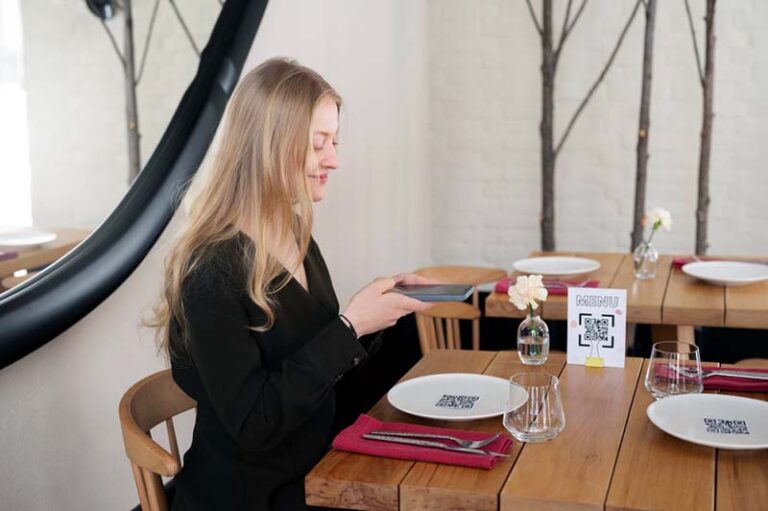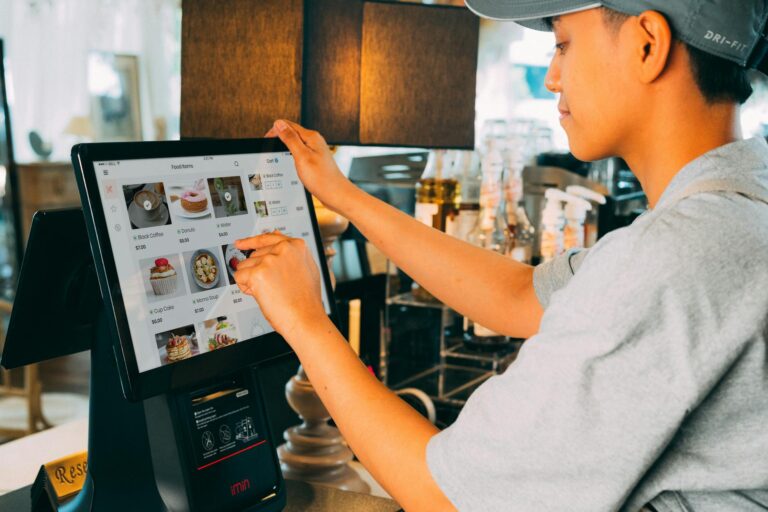Restaurant POS System Sri Lanka: Powering Operations from Order to Payment
A Point of Sale (POS) system is the nerve center of your restaurant. Beyond simply recording sales, modern POS systems unify ordering, kitchen workflows, payment processing, inventory control, and customer relationship management. In Sri Lanka’s competitive food industry, a reliable POS system is crucial for efficiency and profitability. This article explores what a modern POS system offers and how OrderNow.lk combines POS functionality with its digital menu platform to create a seamless experience.

Why a POS System Matters
Traditional cash registers only log transactions. Staff must write orders by hand, tally totals manually, and check inventory separately. This leads to errors, slow service, and frustrated customers. A modern POS system eliminates these issues by automating processes, reducing human error, and providing detailed data about every aspect of your business. This data helps you make informed decisions about pricing, staffing, and menu changes.
Essential Features of a Modern POS
1. Integrated Ordering Channels
A strong POS consolidates dine-in, takeaway, and online orders. Whether customers order via QR code, phone call, or in person, all orders feed into the same system. This prevents confusion, ensures kitchen efficiency, and maintains accurate sales records.
2. Real-Time Inventory Management
Each time an order is processed, ingredients are automatically deducted from the inventory. The system alerts you when supplies run low, enabling you to restock before items sell out. This feature eliminates waste and prevents disappointing customers when dishes are unavailable.
3. Robust Reporting and Analytics
POS systems track daily sales, busiest hours, employee performance, and popular dishes. You can generate reports that highlight high-margin items, identify slow-selling dishes that need reworking or removal, and forecast sales trends. These insights help you refine your menu and labor schedules.
4. Multiple Payment Methods
A good POS system supports diverse payment options—credit cards, debit cards, mobile wallets, bank transfers, and national QR payment services. This flexibility is essential in Sri Lanka, where customers use a variety of payment methods. The system should also process refunds and handle split bills efficiently.
5. Customer Relationship Management (CRM)
Collect and store customer details, order history, and preferences directly through the POS. Use this information to personalize service, create loyalty programs, and launch targeted promotions. A strong CRM component increases repeat business.
6. User Permissions and Security
Not all staff need access to the same data. A modern POS allows you to create user roles—cashiers, managers, chefs—each with different permissions. This protects sensitive data and prevents unauthorized changes. Secure login credentials and encrypted payments protect customer information.
7. Hardware Integration
The POS should work seamlessly with printers, barcode scanners, cash drawers, scales, and kitchen displays. Choose hardware appropriate for your setup: handheld tablets for servers, stationary terminals for cashiers, and displays for the kitchen.
OrderNow.lk POS: Your Integrated Solution
OrderNow.lk offers a POS system built to complement its digital menu and ordering solutions. When you adopt the full OrderNow suite, you gain these advantages:
- Unified Platform: Digital orders, phone orders, and in-person orders are processed in the same system, reducing confusion.
- Real-Time Sync: When a customer orders via QR code, the POS updates inventory and sales records immediately.
- Low Fees: Unlike many third-party POS providers, OrderNow charges 0% commission on orders. You keep what you earn.
- Comprehensive Reporting: Access a dashboard with key metrics like average order value, peak hours, item popularity, and labor costs.
- Customizable Hardware: Use your existing tablets or purchase recommended devices from OrderNow’s partners.
- Multi-Language Capability: Operate in Sinhala, Tamil, and English to accommodate both staff and customers.
- Customer Profiles: Save customer preferences and personalize service. Offer loyalty points and promotions that generate repeat visits.

Implementing a POS System
Step 1: Evaluate Your Current Operations
Identify pain points in your ordering, payment, and inventory systems. Are you struggling with order errors? Does stock frequently run out? Do customers wait too long to pay? Understanding these issues helps you decide which features you need.
Step 2: Choose Your Hardware
Decide whether to use tablets, countertop terminals, or handheld devices. OrderNow supports multiple configurations. If you already have compatible devices, you can integrate them into the system. Otherwise, consider investing in devices recommended for durability and ease of use.
Step 3: Train Your Staff
A POS is only effective when staff know how to use it. Provide training on entering orders, processing payments, generating reports, and handling special requests or refunds. Encourage feedback and update your training materials based on real-world experience.
Step 4: Go Live and Monitor
Launch the system during quieter hours to test its functionality. Monitor real-time data to ensure orders flow smoothly. Keep an eye on inventory levels to see how accurately they reflect actual stock. Adjust settings as needed and address any challenges promptly.
Step 5: Evaluate and Optimize
After your POS has been running for several weeks, analyze the data. Are certain menu items outselling others? Do labor costs align with revenue? Use these insights to tweak shift schedules, reorder ingredients more efficiently, or introduce new promotions. Continuous optimization keeps your restaurant competitive and responsive to customer preferences.
Selecting the Right POS: Cost and Features
POS systems come in various configurations and pricing models. Subscription fees, hardware costs, and payment processing charges can add up. When evaluating options, consider the total cost of ownership over several years, including software updates and customer support. Balance must-have features—like inventory integration and multi-language support—against nice-to-have extras. Ask about hidden costs, such as fees for additional user accounts or transaction surcharges.
Case Study: A Family Restaurant’s POS Journey
A family-run restaurant in Kandy relied on a manual cash register and handwritten tickets for decades. During the pandemic, they shifted to OrderNow.lk’s POS to facilitate online orders and reduce contact. The owners discovered that tracking sales in real time helped them plan inventory better, reducing food waste by 30 percent. They also implemented a loyalty program through the POS, encouraging regulars to return. The biggest change came from data-driven menu adjustments: by highlighting dishes with higher profit margins and removing seldom-ordered items, revenue increased significantly without raising prices.
Integrating with Delivery Platforms and E-Commerce
Many Sri Lankan restaurants partner with third-party delivery apps or run their own delivery services. A modern POS should integrate with these platforms to synchronize orders, prevent double-entry, and manage delivery times. It should also connect with your website or app to handle online reservations and gift voucher purchases. This omnichannel integration ensures a smooth experience for customers whether they dine in, take away, or order from home.
Cloud-Based vs. On-Premises POS
Cloud-based POS systems store data on remote servers, accessible via the internet. They offer flexibility, automatic updates, and remote management—ideal for multi-location restaurants. On-premises systems, installed on local hardware, don’t rely on internet connectivity for basic functions but may require more maintenance and manual updates. Evaluate your internet reliability, budget, and need for mobility when choosing between these options. OrderNow’s POS operates in the cloud, ensuring you can monitor your restaurant from anywhere.
POS and Sustainability
A POS can support your sustainability goals. Digital receipts reduce paper waste, while inventory management decreases food waste by ensuring accurate purchasing. Energy-efficient hardware lowers electricity consumption. Many diners appreciate eco-friendly initiatives, which can enhance your brand image. Consider highlighting these efforts in your marketing.
Additional FAQs
How long does installation take?
Installation time varies depending on hardware setup and staff training. For small restaurants, the POS can be up and running within a day. For larger establishments with multiple terminals, expect a few days for full integration and training.
Can I customize the interface?
Yes. OrderNow’s POS allows customization of menu layouts, button sizes, colors, and language settings. Tailor the interface to match your brand and improve staff efficiency.
What if I need technical support?
OrderNow provides ongoing customer support through phone, chat, and email. Their support team can help troubleshoot issues, provide updates, and answer questions about new features. It’s crucial to choose a POS provider that stands behind their product with reliable assistance.
Does the POS support multiple locations?
Absolutely. If you operate several restaurants, you can manage all locations from a single dashboard. Track performance by outlet, compare sales, and transfer inventory or staff between sites if necessary. Centralized management simplifies expansion and franchising.
The Sri Lankan Perspective
Sri Lanka’s restaurant landscape ranges from street food stalls to luxury hotels. Many businesses rely on manual processes, especially outside major cities. However, with the widespread use of smartphones and digital wallets, customers are ready for a POS-driven experience. Investing in a POS not only improves the customer journey but also enables better financial tracking, which is essential for growth. Whether you are in Colombo’s tourist belt or a family-run restaurant in Galle, a reliable POS helps manage orders, track profitability, and ensure your business thrives.
Frequently Asked Questions
Do POS systems work offline?
Some systems have offline modes that store orders and sync when the connection is restored. However, features like payments and real-time inventory may be limited. Reliable internet is recommended for seamless operations.
Can I use my existing hardware?
Yes. If your tablets or computers meet minimum specifications, they can run the OrderNow POS software. Ask OrderNow support for details.
Will I lose data if there’s a power outage?
The system stores data in the cloud. If power or internet goes down, orders are cached on the device and sync when connectivity returns. It’s wise to have a backup power source to continue processing orders.
Is my data secure?
OrderNow uses encryption and secure servers to protect business and customer data. Regular backups ensure information is safe from loss.
Conclusion
A modern POS system is indispensable for Sri Lankan restaurants aiming to thrive in a competitive market. It reduces errors, accelerates service, manages inventory, and collects valuable data. When integrated with digital menus and contactless ordering, it creates a seamless experience from the moment a customer arrives to the moment they leave. OrderNow.lk’s POS system is built specifically for the local market, offering functionality, affordability, and support. Upgrade your restaurant today and discover how technology can transform your business.
Ready to revolutionize your operations? Enroll in OrderNow POS






